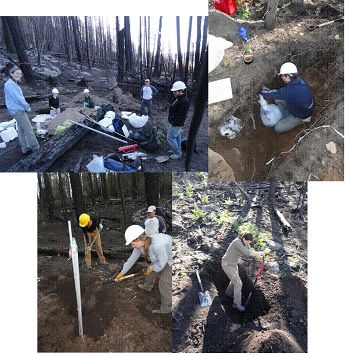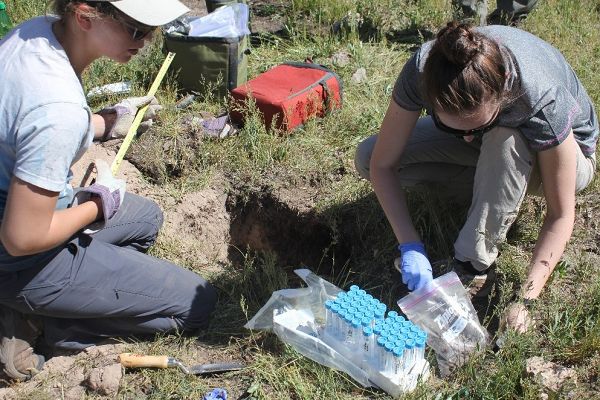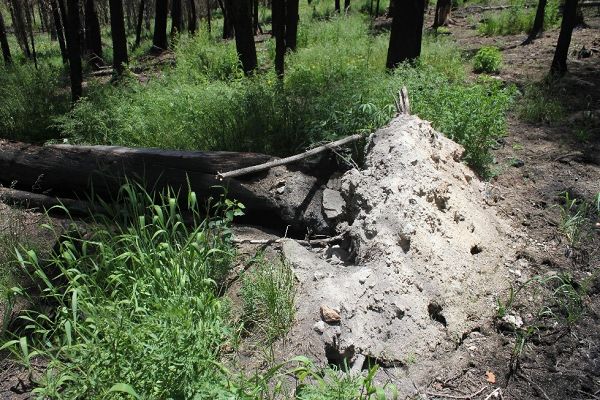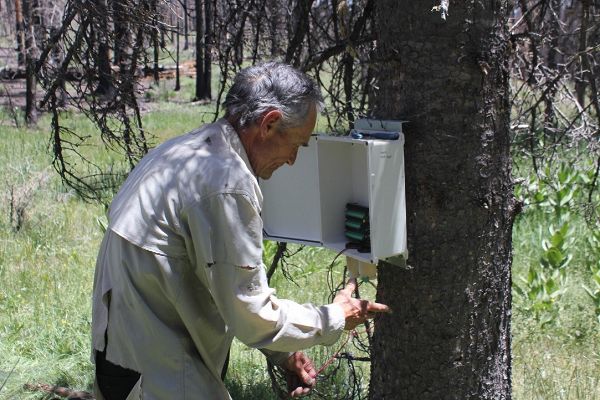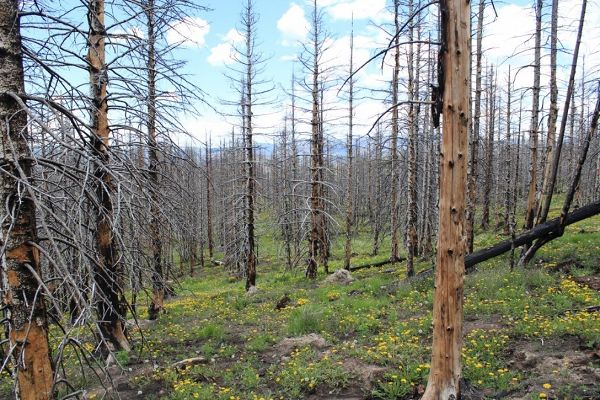Annual Activities
Catalina-Jemez CZO project funding was initiated in September 2009. The CZO team, comprising 15 faculty, 4 postdoctoral scientists, 17 affiliated graduate students, three field technical staff, and a data management specialist, derive from five departments at the University of Arizona as well as collaborators at Arizona State University, Idaho State University, University of New Mexico, and the Valles Caldera National Preserve. The group meets weekly to discuss research and education progress toward building a CZO that has two observatory locations: The Jemez River Basin NM and the Santa Catalina Mountains AZ.
Installation of equipment in the “Burned ZOB” on Rabbit Mountain, Jemez CZO (October 2011). The catchment was subjected to high intensity burn, particularly in higher elevation locations. Installation of equipment involved a cross-section of CZO students, postdocs and staff.
The full set of Catalina-Jemez CZO activities are presented in our annual reports that are available as PDF downloads from the links below.
Selected activities from 2014-2015:
Ph.D. student Dawson Fairbanks and M.S. student Maggie Murphy collect depth resolved soil samples for year 2 postburn in Mixed Conifer ZOB (JRB). Samples are being analyzed for characterization of catchment scale variation in biogeochemical and microbial composition. (Photo Jon Chorover)
The Thompson Ridge wildfire of 2013 was stand replacing. Standing dead trees that fall generate significant post fire bioturbation and carbon translocation, which is being measured. (Photo Jon Chorover)
Field technical scientist, Mark Losleben, installs new data loggers for subsurface biogeochemical instrumentation. (Photo Jon Chorover)
Mixed conifer flux tower site was re-installed in this location burned by the Thompson Ridge Fire. (Photo Jon Chorover)
Ph.D. student Dawson Fairbanks and M.S. student Maggie Murphy collect depth resolved soil samples for year 2 postburn in Mixed Conifer ZOB (JRB). Samples are being analyzed for characterization of catchment scale variation in biogeochemical and microbial composition. (Photo Jon Chorover)
The Thompson Ridge wildfire of 2013 was stand replacing. Standing dead trees that fall generate significant post fire bioturbation and carbon translocation, which is being measured. (Photo Jon Chorover).
Field technical scientist, Mark Losleben, installs new data loggers for subsurface biogeochemical instrumentation. (Photo Jon Chorover)
Mixed conifer flux tower site was re-installed in this location burned by the Thompson Ridge Fire. (Photo Jon Chorover)
Explore Further
